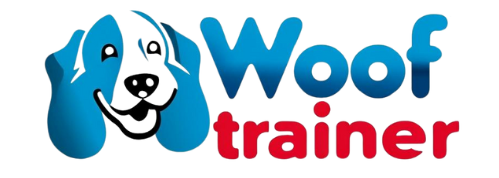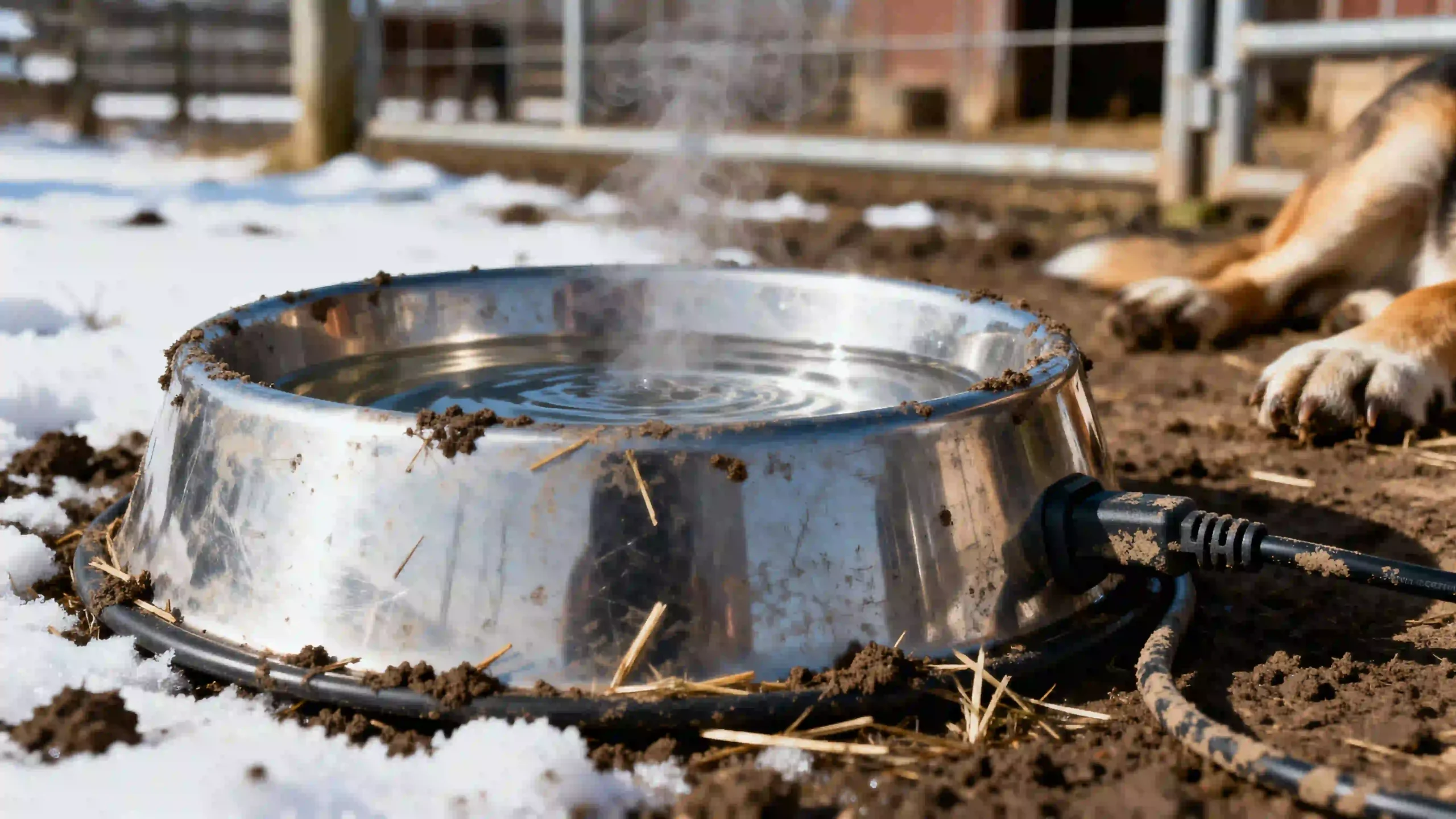For farmers and ranchers who rely on working dogs year-round, a durable heated dog bowl is more than convenient—it’s essential. The right gear keeps water available through snow, mud, and wind, reduces daily labor, and lowers the chance of dehydration or tooth damage from icy shards. This article summarizes field-grade findings from product specs, user reports, and retailer feedback to identify what actually survives farm life and what fails fast.
How this durability review was done
The findings below come from three sources farmers care about: manufacturer specifications (wattage, thermostat ratings, materials), retailer reviews and Q&A (Tractor Supply, Home Depot, Amazon), and community reports (farm forums and owner posts). The combination highlights both lab claims (e.g., “works to −20°F”) and real-world failure modes reported after heavy seasonal use. Representative product pages and reviews were consulted while preparing this piece.(Amazon)
Common failure modes on farms
Farm conditions expose weak points quickly. Recurrent failure modes include:
- Heating-element burnout or detachment. Repeated freeze/thaw cycles, contaminated contacts, or water intrusion can cause elements to fail after a season. Field posts and reviews frequently cite heating failures as the top complaint. (Reddit)
- Cracked plastics after freeze-thaw and UV exposure. Many lower-cost plastic bowls crack or warp when exposed to repeated freezing and impact. Users report plastic bodies that become brittle after multiple winters.
- Cord damage from chewing, abrasion, or being buried in mud. Exposed cords that lack adequate protection are a recurring safety hazard and service problem.
Understanding these failure modes helps farmers pick truly chew-proof dog bowls and outdoor weatherproof bowls rather than models built for occasional backyard use.
Which designs survived longer in the field
Three product patterns emerge as consistently durable in farm settings:
- Heavy stainless-steel construction with sealed electronics. Metal bowls resist impact, don’t crack, and are easier to sanitize. Models with sealed housings for the thermostat and element reduce water intrusion—translating to multi-season life. Retail pages and long-term user reports favor metal or reinforced designs for longevity.
- Thermostatic heating with modest wattage and insulation. Bowls that run on a controlled heater (turn-on near freezing, turn-off above set temp) avoid wasted runtime and component overheating. This approach also reduces continuous stress on the element, improving lifespan. Premier1 and similar heavy-duty waterers explicitly advertise thermostats and low-temperature performance.
- Steel-wrapped or protected cords and sealed connectors. Cord protection prevents chew damage and abrasion in muddy yards. Several manufacturer pages note abrasion-resistant wraps and recommend sheltered placement to minimize cord exposure.
Product types that work best on farms
- Large capacity electric bowls with sealed elements. These deliver thermal mass (slower freeze) and consistent power. Farm-grade electric waterers and larger heated bowls often withstand heavy use better than small, low-watt units. Examples and user notes appear in retailer listings.
- Trough or bucket heating systems for communal areas. Where multiple animals share one source, bucket heaters or insulated heated waterers (commercial poultry/stock versions) reduce the number of fill cycles and handle volume demands. These units often have higher wattage and robust housings.
- Solar-assisted set-ups only in specific contexts. Solar solutions can work for remote paddocks in sunny climates, but their reliability in prolonged cloudy, subzero stretches is limited unless sized with substantial battery backup. In many farm tests, electric remains the most dependable option for consistent hydration. (Reddit)
Field notes: what farmers actually do to extend bowl life
Farm users with multi-season success tend to combine good components with protective practices:
- Shelter & elevation. Placing bowls under eaves or in small shelters reduces wind chill and direct snow load; elevating bowls above ground mud decreases corrosion and cord burial. K&H and other manufacturers explicitly recommend sheltered placement for best performance.
- Insulation & covers. Using insulated housings or removable lids at night prevents surface freeze and reduces heater duty cycles.
- Routine inspection. Daily visual checks during winter for cracked seams, exposed wires, or slush build-up catch small problems before they fail. Many negative product reports could have been avoided with quick cord checks. (Reddit)
- Spare parts on hand. Farms that stock spare cords, replacement elements, or an extra bowl avoid downtime when a unit fails mid-storm.
Selection checklist for a durable heated dog bowl
When evaluating models for farm use, confirm the unit has:
- Material: food-grade stainless steel or heavily reinforced, cold-rated plastic. Stainless steel is preferable where impact and UV exposure are common.
- Sealed heating elements and thermostat: minimizes water intrusion and electrical faults.
- Chew-proof/abrasion-resistant cord protection. Look for steel-wrapped or conduit options.
- Thermostat rating or tested low-temp performance. Manufacturers that specify operation near −20°F offer more confidence for frigid regions.
- Serviceability & warranty: Can you replace the element or cord? Is there accessible customer support?
For broader context on features and farm-grade choices, see Heated Dog Bowls for Farm Dogs: What You Need to Know. For guard-dog-specific options in extreme conditions, consult Best Heated Dog Bowls for Guard Dogs in Extreme Weather, and for scaling to many animals, review Heavy-Duty Heated Dog Bowls Built for Large Kennels.
Installation and maintenance tips that reduce failure
- Avoid extension cords where possible—voltage drop and exposure increase failures. If unavoidable, use heavy-gauge, outdoor-rated cords and protect all connectors.
- Mount cords out of reach and off the ground (conduit or wrapped channels).
- Clean bowls daily when dogs forage in mud; mineral buildup and sludge reduce heat transfer to water.
- Test elements before winter—run units in cold conditions before the season so failures happen on the bench, not during a storm.
Final assessment
A durable heated dog bowl for farm life is a system: rugged hardware, smart thermal control, cord protection, and farmer practices (shelter, inspection, spare parts). Across manufacturer claims and user reports, units that combine sealed electronics, thermostats, strong materials, and cord protection show the best multi-season survival. Electric, thermostatically controlled bowls and commercial heated waterers are the most reliable choice for farms with long, cold winters; solar or lightweight options are niche solutions for specific off-grid situations.
FAQ
-
What material lasts longest for farm bowls—steel or plastic?
Food-grade stainless steel generally outlasts plastic under repeated freeze-thaw and impact. Thick, cold-rated plastics can work, but steel tolerates abuse better. -
Are thermostats necessary in farm-grade heated bowls?
Yes. Thermostats reduce unnecessary run time (extending element life) and prevent overheating; they’re a key longevity feature. -
How often do heating elements fail in practice?
Failure rates vary; many user reports show elements failing after one season in cheaper models. Higher-quality, sealed units experience fewer failures when combined with proper shelter and maintenance. -
Can I safely use an extension cord?
It’s best to avoid them. If used, choose a heavy-gauge, outdoor-rated cord and protect it in conduit—otherwise voltage drop and exposure increase failure risk. -
What is the single best practice to extend bowl lifespan?
Shelter plus routine inspection: keep the bowl out of wind/snow, elevate it, and check cords/elements daily during winter. That combination prevents many common failures.


